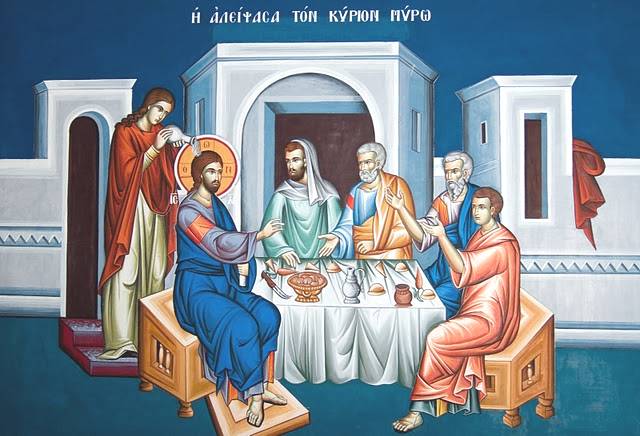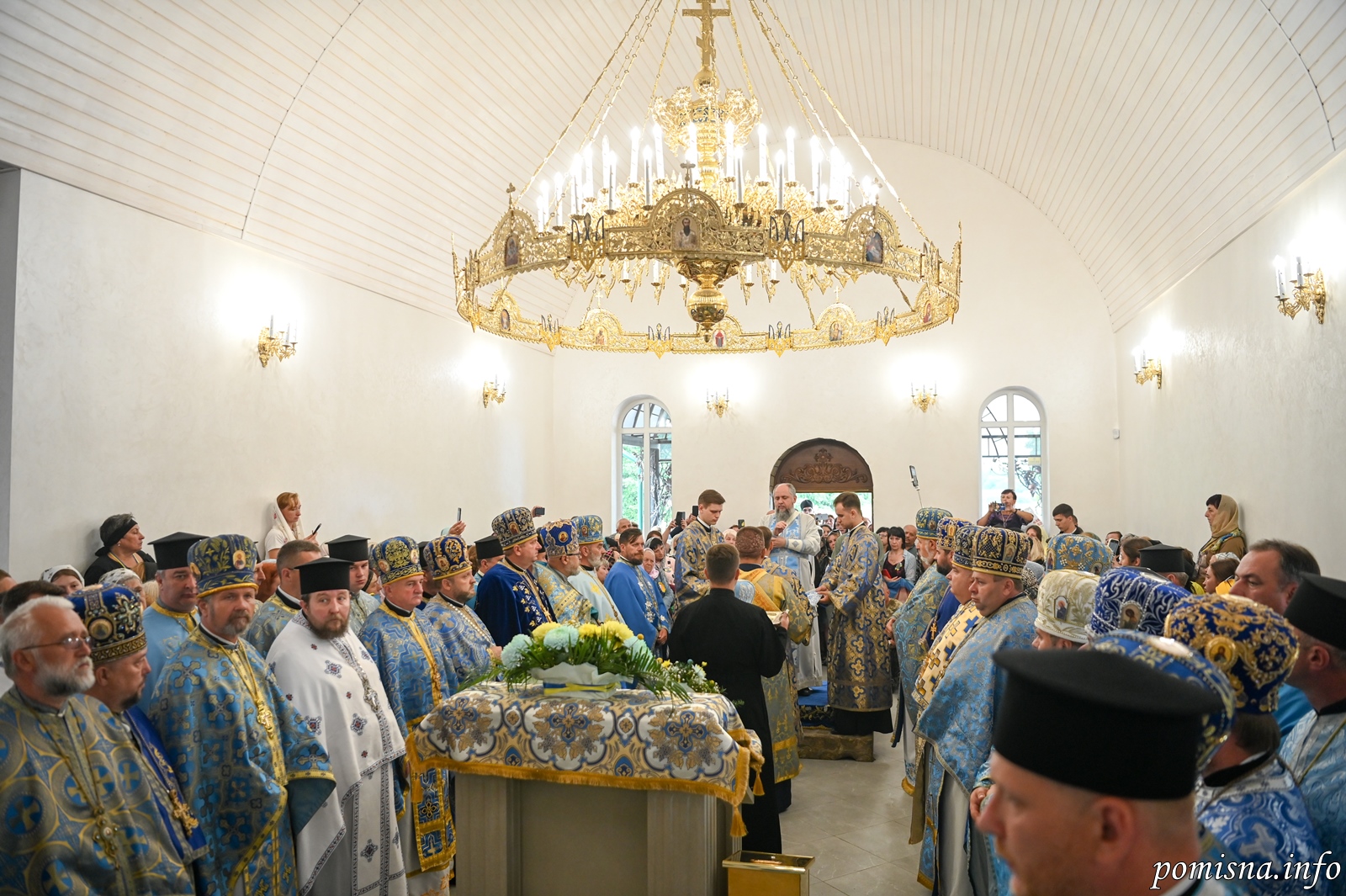Hymn of Kassiani – Great and Holy Wednesday


The History
At Bridegroom Orthros (Matins) on Great and Holy Tuesday evening, the Church chants the following beautiful and inspiring hymn written by Saint Kassiani:
“O Lord, the woman who had fallen into many sins, perceiving Thy Divinity, fulfilled the part of a myrrh-bearer; and with lamentations she brought sweet-smelling oil of myrrh to Thee before Thy burial. ‘Woe is me,’ she said, ‘for night surrounds me, dark and moonless, and stings my lustful passion with the love of sin. Accept the fountain of my tears, O Thou Who drawest down from the clouds the waters of the sea. Incline to the groanings of my heart, O Thou Who in Thine ineffable self-emptying hast bowed down the heavens. I shall kiss Thy Most Pure feet and wipe them with the hairs of my head, those feet whose sound Eve heard at dusk in Paradise and hid herself for fear. Who can search out the multitude of my sins and the abyss of Thy judgments, O Savior of my soul? Despise me not, Thine handmaiden, for Thou hast mercy without measure.”
Saint Kassiani the Hymnographer and poet was born between 805 A.D. and 810 A.D. in the city of Constantinople into a wealthy family and grew to be exceptionally beautiful and very intelligent. Three Byzantine chroniclers claim that she was a participant in the “bride show” (the means by which Byzantine princes/emperors sometimes chose a bride, giving a golden apple to his choice) organized for the young bachelor-emperor Theophilos the Iconoclast by his stepmother, the Empress Dowager Euphrosyne. Smitten by Kassiani’s (Kassia) beauty, the young emperor approached her and said: “Through a woman came forth the baser things,” referring to the sin and suffering coming as a result of Eve’s transgression. Kassiani promptly responded by saying: “And through a woman came forth the better things,” referring to the hope of salvation resulting from the Incarnation through the Most Holy Theotokos.
– “Εκ γυναικός τα χείρω.”
– “Και εκ γυναικός τα κρείτω.”
His pride wounded by Kassiani’s rebuttal, Theophilos haughtily passed her by and chose Theodora to be his wife.
We next hear of Kassiani in 843 A.D. when it is recorded that she founded a women’s monastery in Constantinople, becoming its first Egoumenissa (Abbess) and devoting her life to asceticism and the composing of liturgical poetry. The best known of her compositions is the Doxastikon Hymn on the Aposticha of the Bridegroom Orthros (Matins) for Great and Holy Wednesday (which is, in parish churches, chanted by anticipation on the previous evening).
Holy Tradition says that in his later years the Emperor Theophilos, still in love with Kassiani, wished to see her one last time before he died, so he rode to the monastery where she resided. Kassiani was alone in her cell, writing her now famous hymn, when she realized that the commotion she heard was because the imperial retinue had arrived. Being now devoted to God in her monastic life, Kassiani fled from her cell and hid, leaving the unfinished hymn on her writing desk.


Theohilos was directed to her cell and entered it alone. Not finding Kassiani, he turned to leave when he noticed papers on the desk and read what was written upon them. When he was done reading, he sat and added one line to the hymn; then he left – never to see Kassiani again. The line attributed to the Emperor is “those feet whose sound Eve heard at dusk in Paradise and hid herself for fear.” When the emperor and his party departed from the monastery, Saint Kassiani returned to her cell, discovered what Theophilos had written, and finished the hymn now popularly known as “They Hymn of the Sinful Woman.”
Saint Kassiani was a Byzantine Egoumenissa (Abbess), poet, composer, and hymnographer. She is commemorated by the Church September 7th. Approximately fifty of her hymns are extant and twenty-three are included in the Orthodox Church liturgical books. The exact number is difficult to assess, as many hymns are ascribed to different authors in different manuscripts and are often identified as anonymous. In addition, some 789 of her non-liturgical verses survive. Many are epigrams or aphorisms called “gnomic verse”. An example: “I hate the rich man moaning as if he were poor.”
The Hymn of Kassiani, also know as the Hymn of the Fallen Woman, is a Penitential Hymn written in the 9th Century. It is based on the Gospel reading for Holy Wednesday morning (Matthew 26:6-16), which speaks of a sinful woman who anoints Jesus’ feet with costly ointment (distinguished from a similar incident with a different woman, St. Mary Magdalene). This hymn is chanted only once a year and considered a musical high-point of the Holy Week, at the Matins and Presanctified Liturgy of Holy Wednesday. One story, about the origin of the hymn, holds that the Abbess Kassiani spent the afternoon in the garden composing this hymn. As she finished writing that verse which says, “I shall kiss Thine immaculate feet, and wipe them again with the tresses of my head,” she was informed that Emperor Theophilos had arrived at the convent. She did not wish to see him, and in her haste to conceal herself, left behind the scroll and pen. Theophilos, having entered the garden, found her half-completed poem, and added the phrase, “those feet at whose sound Eve hid herself for fear when she heard Thee walking in Paradise in the afternoon.” After he departed, Kassiani came out from hiding. When she took up her composition, she beheld the phrase written in his handwriting. She retained it and went on to complete the poem. Saint Kassiani lived during the 9th Century. She is commemorated on September 7.




